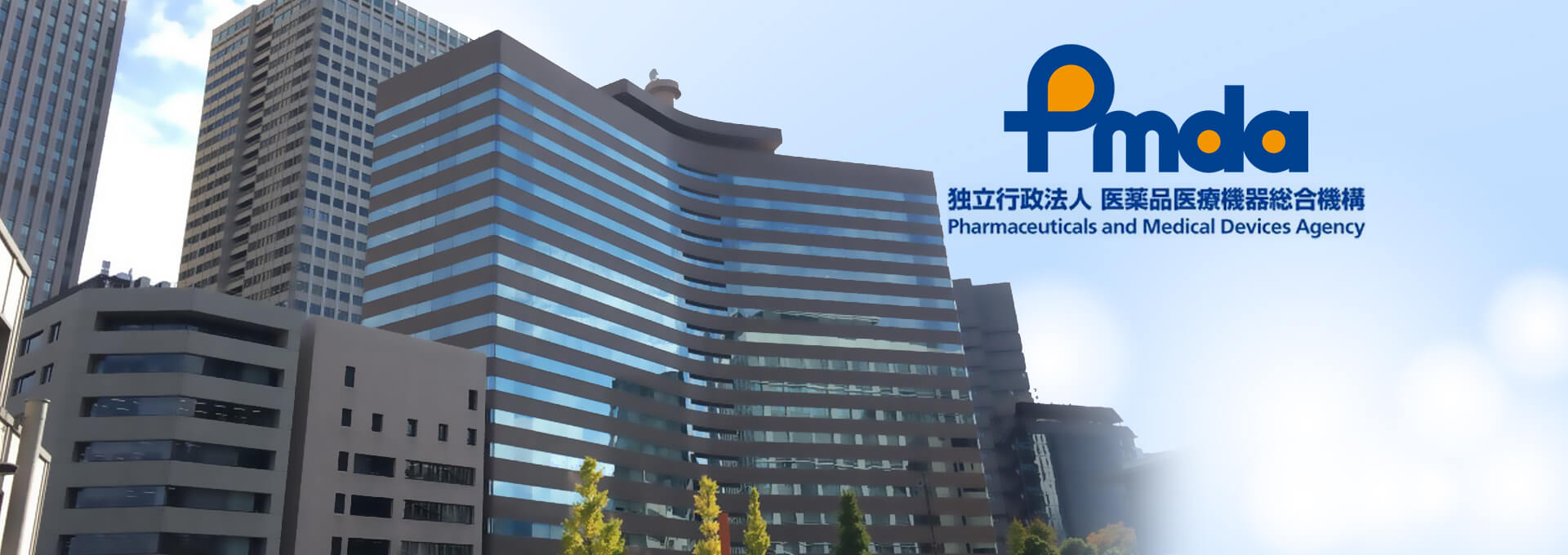Understanding Japan Quality A review of Japan’s specific quality requirements and the need to understand culture and history when manufacturing drug product for the Japanese market

Most people in the pharmaceutical industry are familiar with the term “Japan Quality”. It is commonly understood that drug products for the Japanese market are expected to meet very specific acceptance criteria – but why, and what does it mean for the manufacturers?
It is not unusual for pharmaceutical companies to establish special processes to accommodate the specific expectations of Japanese customers. This could be simple measures like re-enforced gowning procedures for handling products after filling or more intense process enhancements providing even more control over the final drug product’s visual appearance. A common measure is to execute an additional visual inspection, often providing more time to inspect for cosmetic imperfections, which would be undesired in Japan. Quality-impacting defects like particulate matter or container-closure defects are generally aligned between Japan and other markets. However, when it comes to the visual appearance of a product, including its packaging, Japanese customers have higher expectations than anywhere else in the world.
Culture
In Japan, attention to detail and the pursuit of excellence are highly valued and deeply rooted in the country’s culture. Zen Buddhism, which significantly influenced Japanese culture, emphasizes striving for perfection, which can only be achieved through practice, continuous improvement (Kaizen) and outstanding discipline (1). These cultural influences are particularly evident in the reliability and punctuality of Japanese trains, culinary arts like making sushi and the craftsmanship in making the highest-quality kitchen knives or precision watches.
This inherent mindset sets the bar high for products imported from outside Japan. It further extends to the pharmaceutical sector, where the highest standards are not only expected to ensure the safety and efficacy of drug products but also their visual appearance. In Japan, the packaging of a drug product is a representation of its manufacturing process and a symbol of its quality. If the product’s packaging is flawed, the content will likely be questioned, too. The question could arise: “How can this company manufacture a high-quality product if they can’t even manage to provide unblemished packaging?”
Furthermore, brand reputation is critical in Japan because the culture strongly supports a group-oriented mentality. Word-of-mouth is vital in establishing and maintaining a good reputation (2). Like in other markets, repeated complaints and product recalls significantly impact reputation, which is another reason why more effort is invested in preventing customer dissatisfaction.
Regulations
 Japan’s standards for drug approval and manufacturing often exceed international standards. The guidelines cover all aspects of a drug product’s life cycle and even though they have undergone alignment with global standards, they remain slightly different (3). Navigating the landscape of Japanese regulations requires a thorough understanding of the regulatory framework and agencies. The two key regulatory bodies are the Ministry of Health, Labour and Welfare (MHLW) and the Pharmaceutical and Medical Devices Agency (PMDA) (4–5). The PMDA is focused on regulating pharmaceuticals and medical devices and acts as an independent regulatory agency, whereas the MHLW has a broader scope, including public health, healthcare policy, labor standards and social welfare.
Japan’s standards for drug approval and manufacturing often exceed international standards. The guidelines cover all aspects of a drug product’s life cycle and even though they have undergone alignment with global standards, they remain slightly different (3). Navigating the landscape of Japanese regulations requires a thorough understanding of the regulatory framework and agencies. The two key regulatory bodies are the Ministry of Health, Labour and Welfare (MHLW) and the Pharmaceutical and Medical Devices Agency (PMDA) (4–5). The PMDA is focused on regulating pharmaceuticals and medical devices and acts as an independent regulatory agency, whereas the MHLW has a broader scope, including public health, healthcare policy, labor standards and social welfare.
In the context of Japan Quality, visual inspection is one of the major instruments to rely on whenever consistent prevention of cosmetic flaws is not possible. Therefore, we want to understand the requirements for visual inspection in Japan compared to other markets.
The Japanese Pharmacopoeia (JP) outlines a visual inspection procedure that is similar to the United States Pharmacopeia (USP) and European Pharmacopeia (EP) standards (6–10). Extensive studies and industry alignment led to an update of the JP method 2016, which harmonized the inspection conditions to black and white backgrounds, 2000-3750lx light intensity and a white light source above the backgrounds. The inspection duration of approximately 10 seconds per container was also aligned, even though JP indicated that the inspection duration could be extended in case it was “not easy.”
The terms to describe acceptance for visible particles on a batch level are slightly different across the Pharmacopoeias, too, but their meaning is very much aligned: “free from readily detectable foreign insoluble matters” (JP), “practically free from visible particles” (EP) and “essentially free from visible particulates” (USP). However, the only Pharmacopoeia providing a numerical acceptance criterion is USP, stating an acceptable quality level of 0.65 for visible particles (11).
Even though the Pharmacopoeia requirements are aligned for the most part, there are additional binding requirements applicable to the Japanese market, which contribute to the high scrutiny in trying to prevent defects being released to the market.
“Pharmaceuticals whose components or quantity, or properties, quality or performance are different from those approved, pharmaceuticals which are unclean, putrid or decomposing … or contain or have foreign substances attached to them… must not be sold, … provided, manufactured, imported or stored”, according to the Japanese Pharmaceutical Affairs Law (12).
As soon as a product needs to be recalled from the market, reputation is significantly impacted. This applies to all markets, but given the cultural background, it might even be more relevant in Japan than elsewhere.
History
In addition to the culture and regulations discussed, one more important element must be covered: Japan’s history of issues with pharmaceutical products, which also led to more caution.
Probably one of the most significant issues was the so-called subacute myelo-optic neuropathy (SMON) epidemic in the 1960s. SMON is a disease of the nervous system caused by Clioquinol, a drug prescribed to treat diarrhea and infections of the intestines. The disease often led to blindness, paralysis and even death. According to the College of Medicine at the University of Tokyo, approximately 30,000 people were affected between 1957 and 1970 (14).
Another notable incident is related to blood products in the 1980s. Blood plasma-derived therapies used to treat patients with hemophilia have been identified as a cause for spreading HIV across the patient population. It was found that plasma donations from infected donors have been used to manufacture the medicines, which later led to routine HIV testing and the development of a heat treatment to prevent further spreading. When the heat-treated products were filed for licensing in Japan, MHLW rejected them to prevent unfair competition to the local Green Cross Corporation, which was not yet ready to implement the heat treatment. Of approximately 4500 patients in Japan, an estimated 2000 contracted HIV through untreated blood products (15).
More recently, more than 1.5 million doses of COVID-19 vaccines have been recalled from the Japanese market because vials containing visible metallic particles have been observed in the field. The stainless-steel particles originated from friction in the equipment that placed stoppers in the vials. As soon as the first particles were recovered by healthcare professionals, even greater attention and pre-inspection of doses prevented the administration of particulates to patients before the batches were completely recalled (16).
These events, among others, led to more focus on approval processes, testing and post-market surveillance requirements to prevent recurrence.
Importing Products to Japan
 In 2019, a survey found that 100% of the (participating) companies importing drug products to Japan performed another 100% visual inspection of every batch once it arrived in Japan. This was done to prevent defects from being distributed to the market, defects that could originate from the shipping process and those that could have been missed at the sending site outside Japan (17).
In 2019, a survey found that 100% of the (participating) companies importing drug products to Japan performed another 100% visual inspection of every batch once it arrived in Japan. This was done to prevent defects from being distributed to the market, defects that could originate from the shipping process and those that could have been missed at the sending site outside Japan (17).
Understanding the Japanese culture and the fact that the Japanese take pride in taking responsibility, it becomes evident that inspecting the batches upon receipt is a natural outcome due to historical issues. Of course, given the probabilistic nature of visual inspection – 100% inspection can never mean 100% detection – it is expected that single defects are recovered during this additional round of inspection (18). These defects could lead to a hold on batch release and the need for additional investigations and risk assessments, as well as batch rejection in the worst case.
A strategy to mitigate these outcomes is to establish robust 100% inspection processes at the sending site and a solid foundation of trust between both parties, outside and in Japan. Japan is a high-context culture that requires establishing a strong relationship and common knowledge of each other’s processes, capabilities and limitations. To support the development of this relationship, it is crucial to allow teams from either site to meet and gain insights into their respective processes. In times when international travel is being limited for several reasons, it appears counterintuitive to have representatives from Japan travel to the United States or Europe and the other way around. Indeed, it is an invaluable investment in a relationship, which allows for building trust and understanding of each other (19). Receiving additional training from Japanese subject matter experts at the sending site is another element that supports trust and improvement in the inspection process. Visual inspection operators in the United States and Europe often accept small imperfections like tiny, barely noticeable scuffs in vials because they are perceived as part of the typical appearance originating from vial handling. Once they learn what Japanese inspectors focus on and how they apply acceptance criteria for cosmetic imperfections, they can better handle the task themselves.
Furthermore, it is important to align on a detailed defect evaluation list for visual inspection and secondary packaging and include them in the acceptance criteria for packaging equipment/process validation. In many cases, specific criteria are applied to discriminate acceptable variation from units, which is unacceptable in Japan. Agreement between both parties should be reached for these cases in advance.
Finally, the last element of building trust is qualifying the sending site for Japan Quality regarding visual inspection. This can be achieved by directly comparing the inspection processes’ capabilities. A side-by-side comparison can be performed by establishing a test kit (a set of vials containing defective and acceptable units in a ratio of not more than 1:10) and performing a threshold study (Knapp methodology) at both sites with the same kit (20). With statistical analysis, the process performance of the two inspection methods can be compared, and if no significant differences are observed, the receiving site can trust the sending site to perform visual inspection as thoroughly as they would themselves. To cover the potential concern of units being damaged during shipment, there is a strong emphasis on shipment validation as well as the possibility of performing incoming acceptable quality level sampling after shipment.
Conclusion
The Japanese market's demand for high standards and specific acceptance criteria for drug products are rooted in a deep cultural emphasis on quality, robust regulatory frameworks, high consumer expectations, historical lessons and a drive for continuous improvement and innovation. Understanding Japan Quality and its cultural implications helps manufacturers outside Japan focus on the right elements to ensure satisfaction among customers in Japan. Building trust and understanding between the sending and receiving sites simplifies processes, reduces cost and effort, increases efficiency and facilitates faster release to the market while maintaining the highest quality, reputation and regulatory profile.
References
- Masuda, A. (2017). Zen and Japanese Culture. In: Masuda, A., O'Donohue, W. (eds) Handbook of Zen, Mindfulness, and Behavioral Health. Springer, Cham.
- Kuramoto, S. (2023). Japanese Consumer Behavior: How Culture Shapes Buying Habits. Medusa Japan. https://medusajapan.com/japanese-consumer-behavior-how-culture-shapes-buying-habits/ (accessed July 4th 2024)
- https://www.pmda.go.jp/english/int-activities/int-harmony/0001.html (accessed July 4th 2024)
- https://www.pmda.go.jp/english/index.html (accessed July 4th 2024)
- https://www.mhlw.go.jp/english/ (accessed July 4th 2024)
- Japanese Pharmacopoeia, 6.06 Foreign Insoluble Matter Test for Injections
- USP <1> Injections and Implanted Drug Products (Parenterals) – Product Quality Tests
- USP <790> Visible Particulates in Injections
- EP 05.20 Parenteral Preparations
- EP 2.9.20 Particulate Contamination: Visible Particles
- Shabushnig, J. et al (2015), Japanese Pharmacopeia (JP) and United States Pharmacoeia (USO) Developments in Visual Inspection for Foreign Particulate Matter. PDA Journal of GMP and Validation in Japan Vol. 17, No 1
- Japanese Pharmaceutical Affairs Law, Chapter IX, Section 2, Handling of Pharmaceuticals, Article 56 Prohibition of Sale and Manufacturing. https://www.japaneselawtranslation.go.jp/en/laws/view/3213/en#je_ch9sc2at10 (accessed July 4th 2024)
- PMDA, Official Notification 1121 No. 10: Recall of pharmaceuticals and medical devices; Basic principles on the necessity of and targets for recall
- https://en.wikipedia.org/wiki/Subacute_myelo-optic_neuropathy (accessed July 4th 2024)
- https://en.wikipedia.org/wiki/Contaminated_blood_scandal_in_Japan (accessed July 4th 2024)
- https://www.reuters.com/business/healthcare-pharmaceuticals/japan-finds-stainless-steel-particles-suspended-doses-moderna-vaccine-2021-09-01/ (accessed July 4th 2024)
- (2019) PDA Pharmaceutical Product Quality Testing Conference, Tokyo
- Ewan, S. et al (2023) 100% Inspection does not mean 100% Defect Detection. BioPhorum Operations Group
- Meyer, E. (2016). The culture map. PublicAffairs.
- USP <1790> Visual Inspection of Injections



